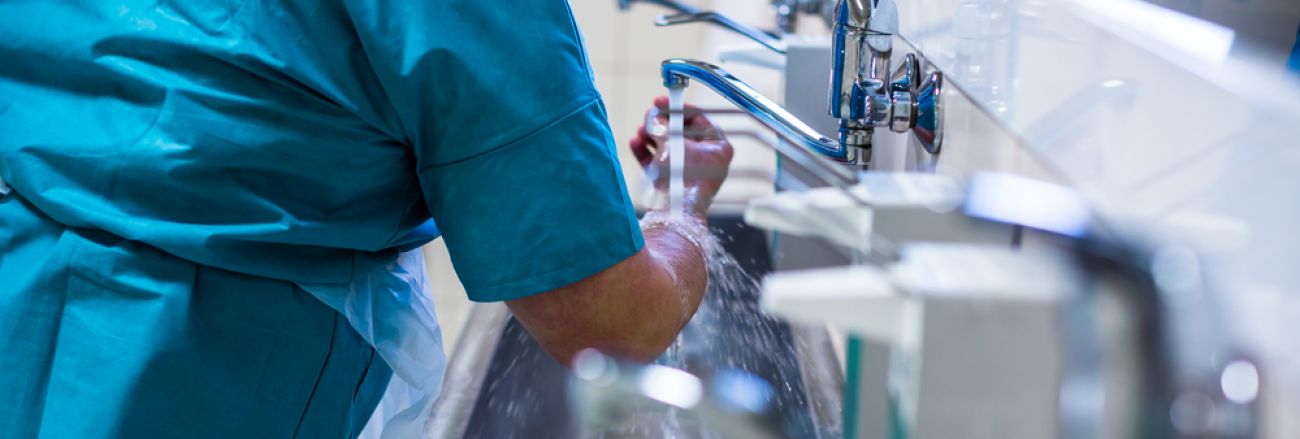Designers of health facilities have long heeded Hippocrates’ dictum to first, do no harm. Engineers, in particular, have always sought ways to use ventilation, grounding, and water treatment to create safe systems and safe conditions for patients, healers, and visitors. Grounded in this tradition, the people of Mazzetti are forever looking for and promoting creative new ways to advance this agenda.
We were recently able to host Barry Hunt, the founder of the Canadian NGO CHAIR (Coalition for Healthcare Acquired Infection Reduction) to discuss a number of ideas developed by that group. CHAIR’s vision is to reduce 80% of Healthcare Acquired Infections (HAIs) by 2024. CHAIR is promoting a number of strategies aimed at engineering environments to be part of this effort. Many of the ideas were new twists on old themes, and two were particularly interesting.
First, one of CHAIR’s ideas echoes an idea Mazzetti has promoted for some time – replacing traditional hot and cold water distribution systems with a single tempered water system, using point-of-use heaters where only hot water is required. This idea recognizes that keeping water below a certain temperature can help to limit amplification of various waterborne pathogens, particularly strains of Legionella. The strategy reduces: initial costs, ongoing costs, and, by slowing pathogen amplification, risk of Legionella growth. Mazzetti helped, and is helping to move the national codes to accept such a design, and we included this strategy in our wining Small Hospitals Big Ideas competition, yet we are not aware of any US hospital or even ambulatory facility to follow it. CHAIR, though, includes at least one Canadian hospital, that has adopted the strategy. We are in the process of learning more about this hospital, and its outcomes, to, we hope, help others pursue a strategy that appears to be a triple win. More when we learn more.
A second intriguing idea builds on the well-known sterilizing properties of ozonation. Many hospitals now use ozonated water as a preferred cleaning medium due to it being completely non-toxic, yet remarkably effective in destroying most pathogens. According to the EPA, Ozone (O3) is one of the stronger disinfectants and oxidants available in drinking water treatment.
CHAIR has taken this idea one step further in the seemingly intractable battle to increase handwashing. The CHAIR solution is a hand-wash fixture fitted with a sensor operated faucet that not only limits water flow, but more importantly, ozonates the water produced. In so doing, it both purifies the water at point of use (thus eliminating any residual waterborne pathogens), while also eliminating the need for further hand cleansers. The staff person is thus able to wash her/his hands repeatedly without skin irritation, thus theoretically increasing compliance. Because the ozonation happens at the device, the supply pipes are not necessarily as susceptible to the corrosive effects of ozonation. Although corrosion-resistant piping materials should be considered for use with ozonated waste water, the upside is the p-trap and sink drain, which have historically been infection control problems, would be similarly cleaned by the ozonated waste.
Coupling these two ideas could go a long way towards eliminating waterborne pathogens in the healthcare facility, as well increasing hand-washing compliance. And of course, that is the real magic, given that the vast majority of HAIs are contact infections.
Mazzetti is in the process of buying a demo unit for the sink, and we are going to test it ourselves, as well as making it available to our clients. We’ll provide updates as available. Interested to participate in the experiment? Let us know.
Interested in what you see? Subscribe to receive monthly news and information
more tailored to what you need.

